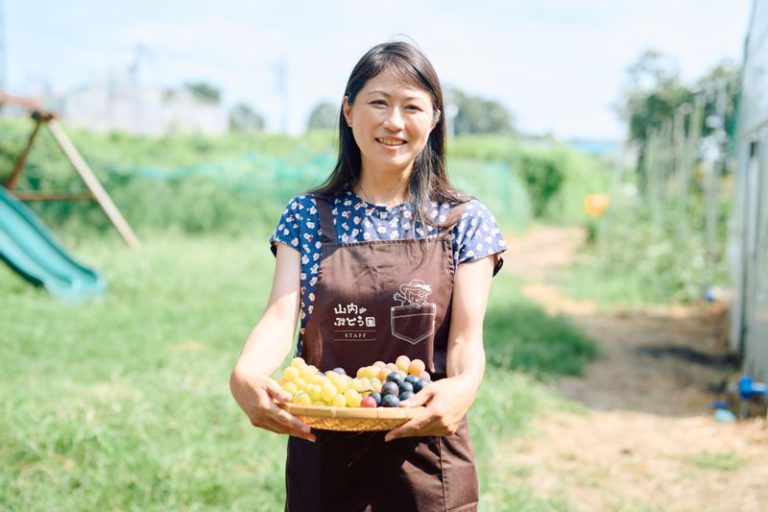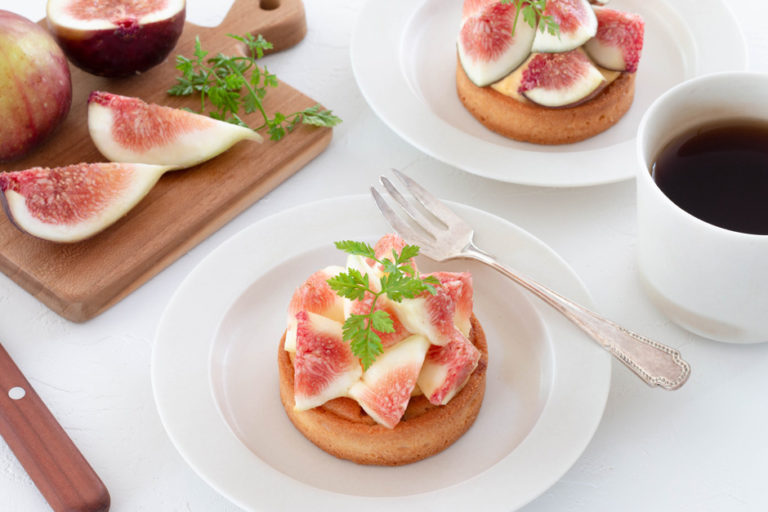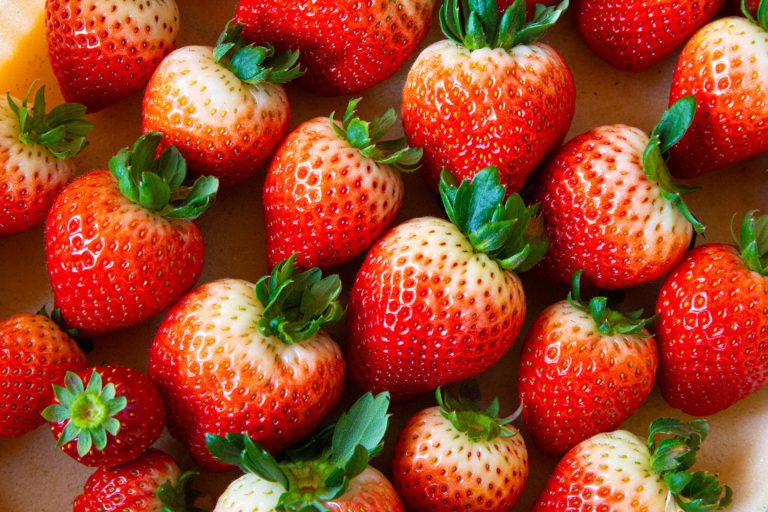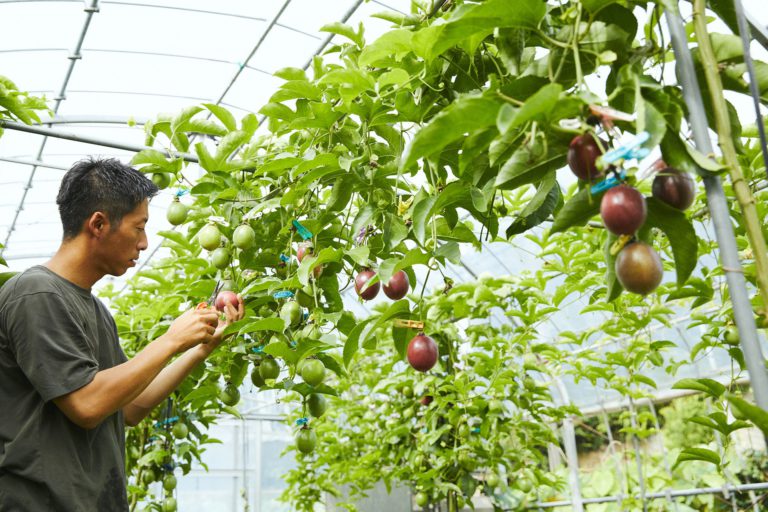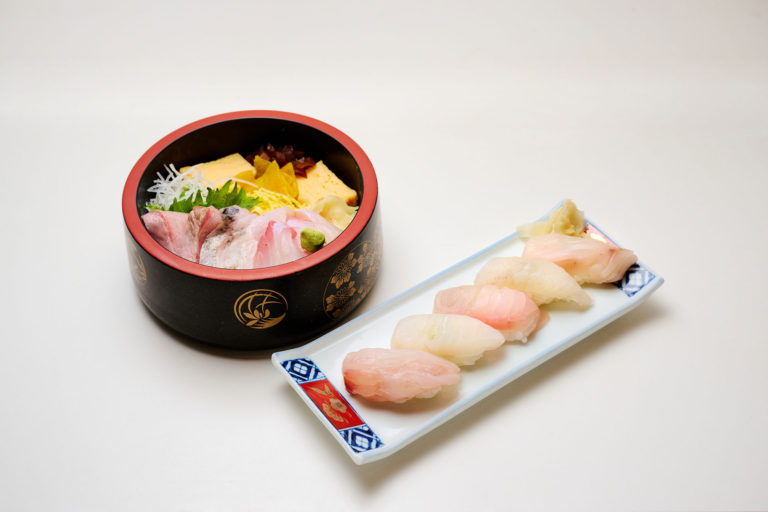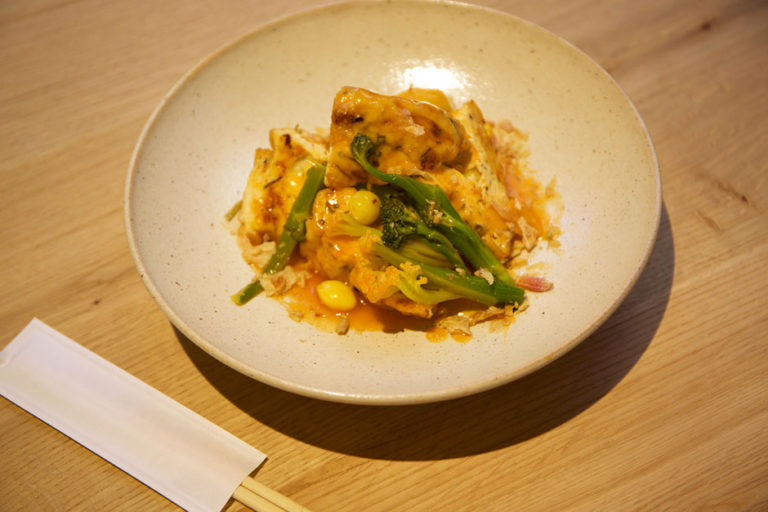A Field Full of Memories: Enjoy Picking Grapes in Tokyo
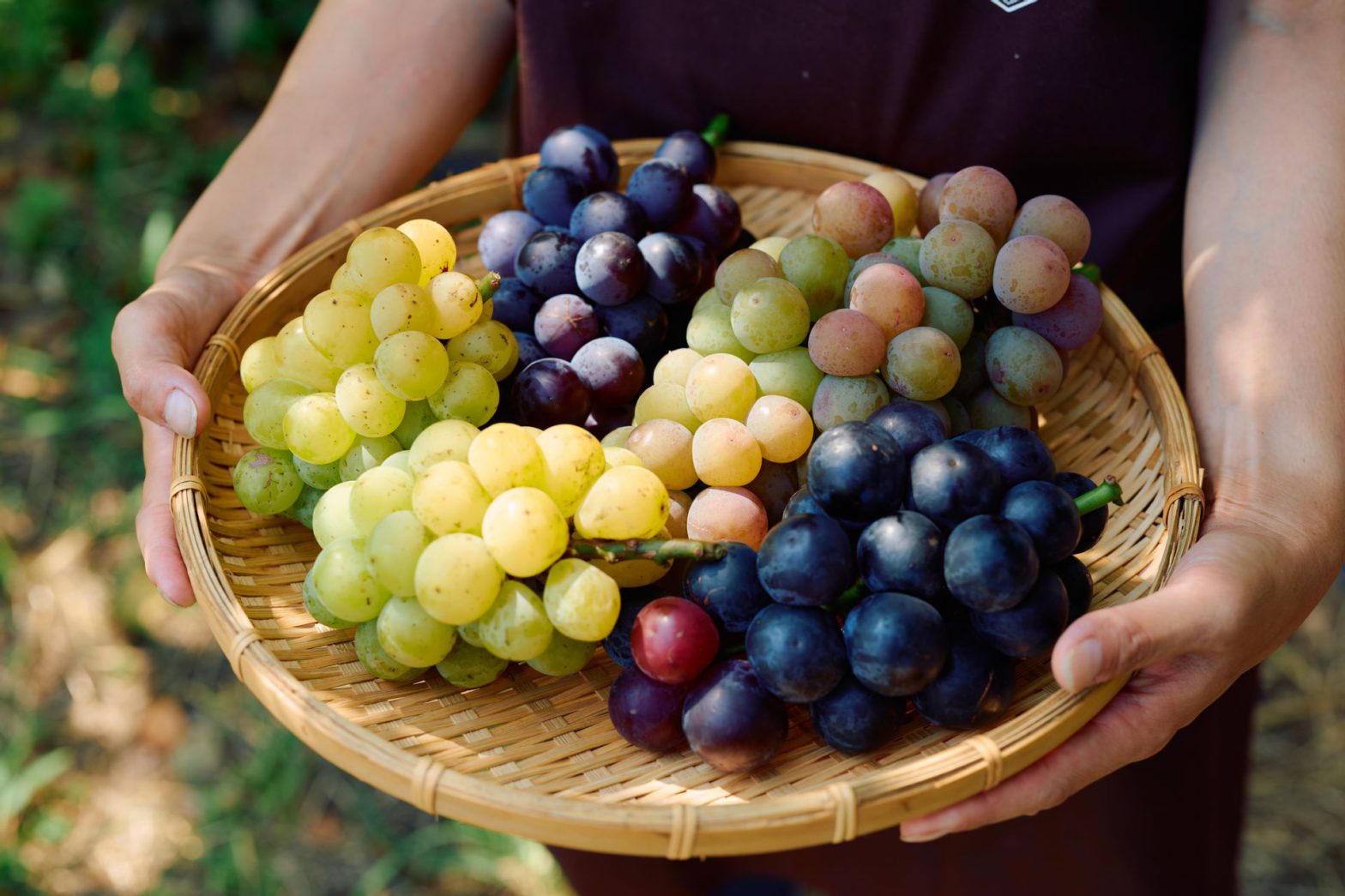
A tourist farm in business for 400 years, teaching the joy of food
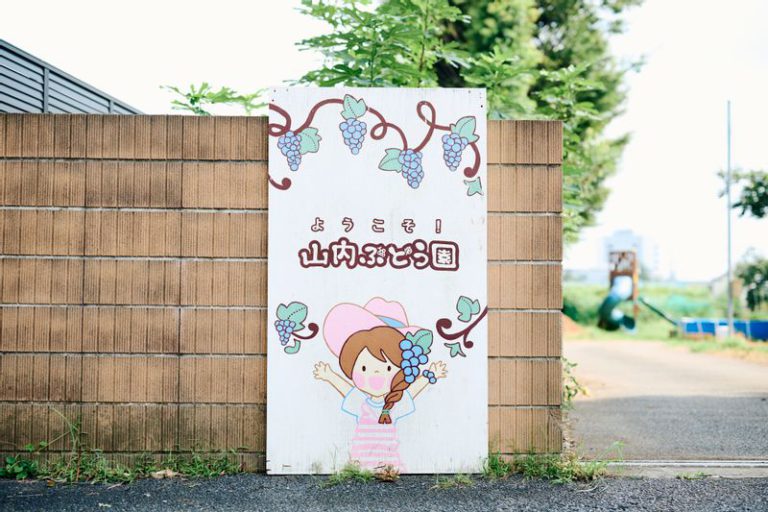
Located in a residential district of Chofu, Tokyo Prefecture, Yamauchi Vineyard is a tourist farm where you can enjoy harvesting a variety of produce throughout the year. Within walking distance of Sengawa Station, the farm grows roughly 100 varieties of fruits and vegetables and is visited by families from the city center. Given that the farm first started an incredible 400 years ago, the current head of the farm, Mika Yamauchi, is now the 20th-generation owner.
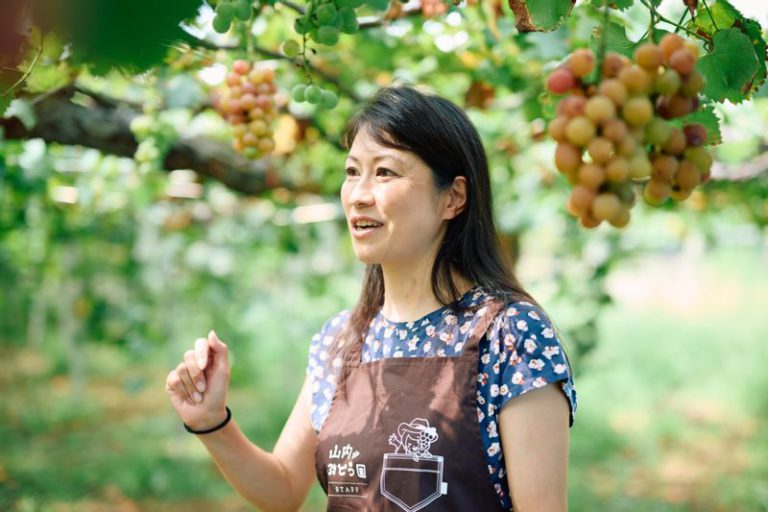
“I don’t know whether it started about 400 years ago because there are no documents left, but up until about 70 years ago, this farm grew rice, and during my grandparents’ generation, there was a time when it also had dairy farming. My grandparents started growing grapes 40 years ago. Our oldest vine is about that old.”
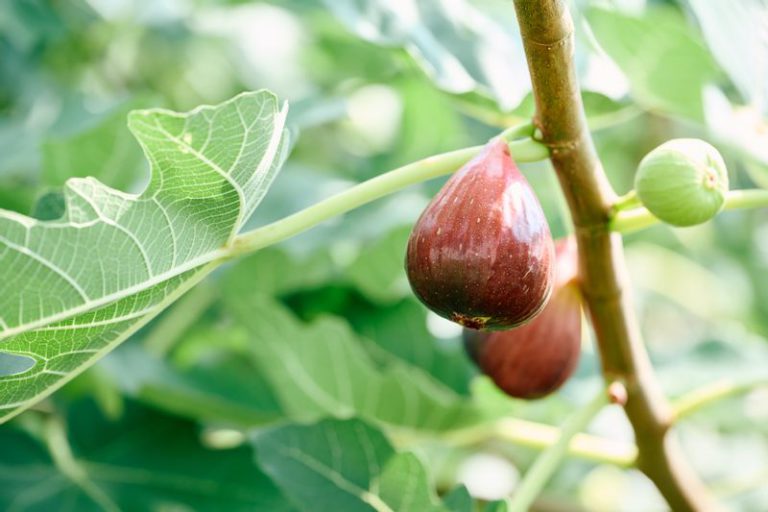
With Mika’s generation, they increased the number of vegetables so that people can experience harvesting year-round. Looking out over the fields, you can see tomatoes, eggplants, figs, and other produce. In addition to harvesting produce, they also hold events for nagashi somen (fine white noodles served flowing down a small flume) and baking pizza. They have many repeat visitors who enjoy harvesting various crops each season.
Try some rare varieties of grapes not found in supermarkets
Among their various produce, grapes are the most popular. Grape picking opportunities in Tokyo are rare, and because grapes can only be harvested from mid- to end-August, reservations fill up quickly. They have seven different varieties in total, three or four of which may be harvested at the same time.
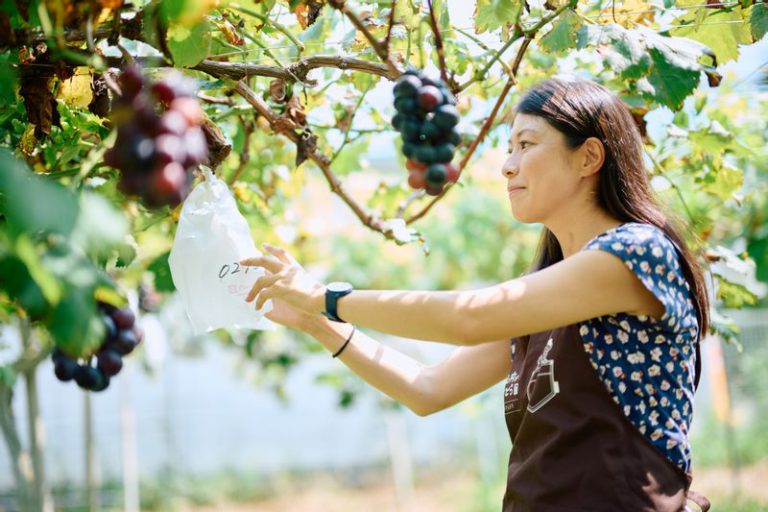
“There are many delicious varieties of grapes, but only a few are available at supermarkets. The fun of tourist farms is not only experiencing harvesting them but also eating grapes you didn’t know about,” says Mika.
To encourage people to try as many rare varieties as possible, they actively cultivate varieties developed in surrounding areas; for example, the Tamayutaka developed in Tama and the Fujiminori born in Fujisawa, Kanagawa Prefecture. Each has a different color, texture, and flavor, so it’s fun to compare the different varieties.
Mika introduced us to the different varieties available to be harvested that day.
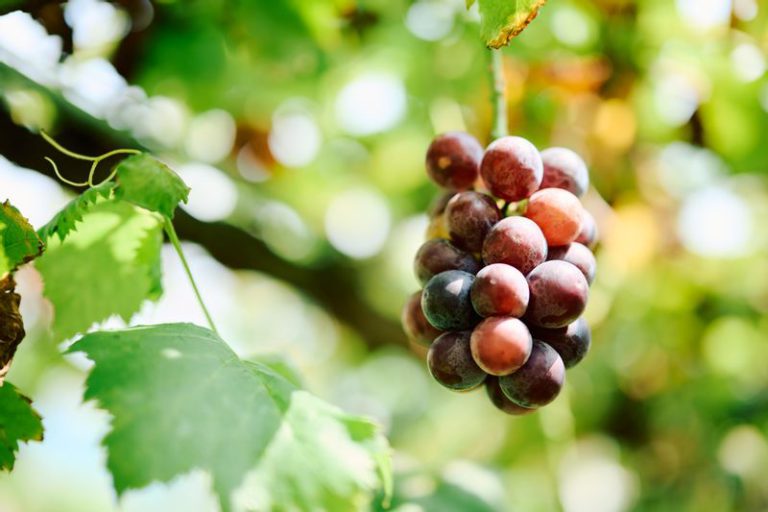
Fujiminori
These red grapes were born in Fujisawa. They are large, voluminous grapes with lots of juice and a refreshing taste. They have been rapidly growing in popularity.
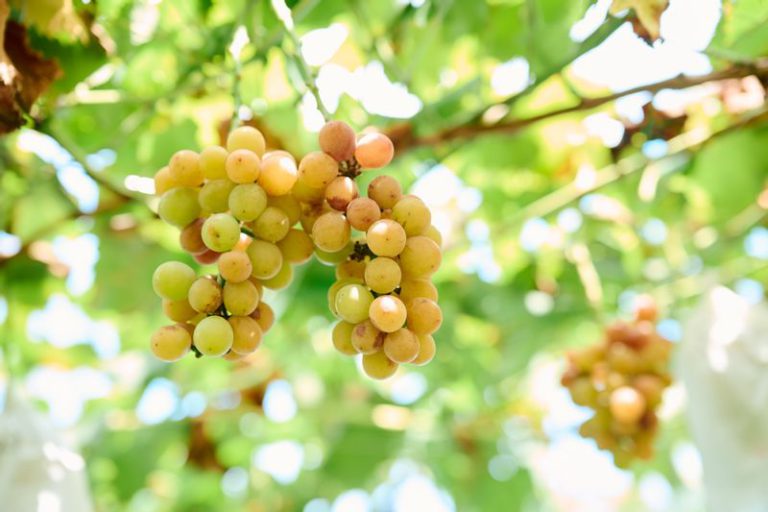
Beniizu
A rare variety of grape that has been cultivated for a long time but is not easily distributed due to its delicate skin. It has a high sugar content and is extremely juicy.

Black Beat
This variety was born in Kumamoto by crossing the Pione and Fujiminori. It has a thin, deep purple skin that almost looks black and a perfect balance of sweet and sour.
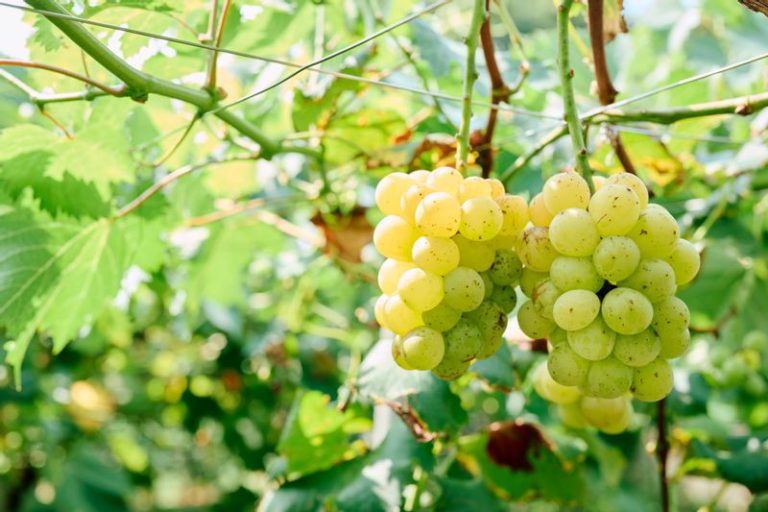
Tamayutaka
A Chofu-born variety created for the local community by the late Kozaburo Ashikawa, who worked for years developing grape varieties. It has a firm texture and a refreshing, Muscat-like flavor.
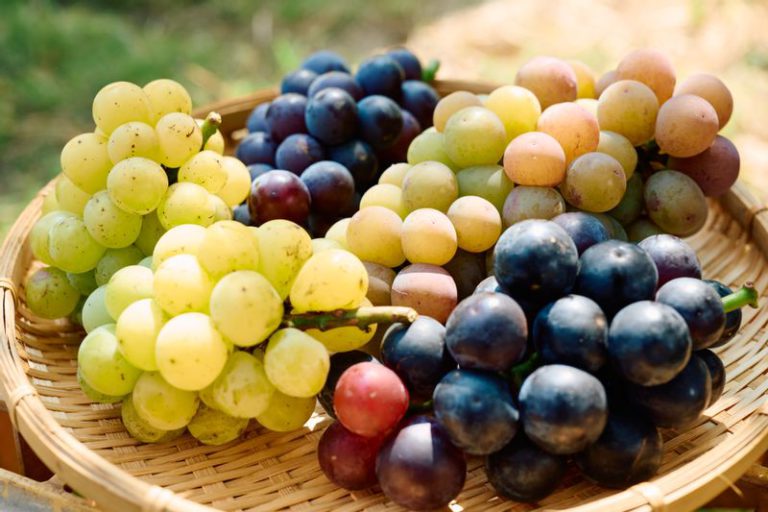
While they are delicious as is, Mika recommends freezing and eating them like a sorbet. Because of their high sugar content, they don’t completely freeze and have a chewy texture that is bound to make you addicted.
From designer to farm head: Connecting a farm full of family memories to the future
Mika took over the farm ten years ago. She graduated from an art university and worked as a designer for a company, so she was completely unfamiliar with the world of agriculture. Even so, she decided to make a bold change to her life, single-mindedly wishing to protect the farm that had operated for 400 years.

“My father suddenly passed away about three and a half years after I started working. At the time, my grandparents were still working in the fields, but they were already over 80, so I decided to come home and do it myself. It was really sad thinking about the possibility of losing this place where I had so many memories as a kid.”
Mika studied agriculture for two years at the Tokyo Metropolitan Agriculture and Forestry Research Center in Nishi-Tachikawa. After returning to the farm, she got busy working in the fields and attracting customers. In addition to raising her children, she is in charge of everything from preparing the fields to planning events and advertising on social media. Although it may be hard at times, Mika says, with a lively expression, that she finds it rewarding to have found her place as a tourist farm.
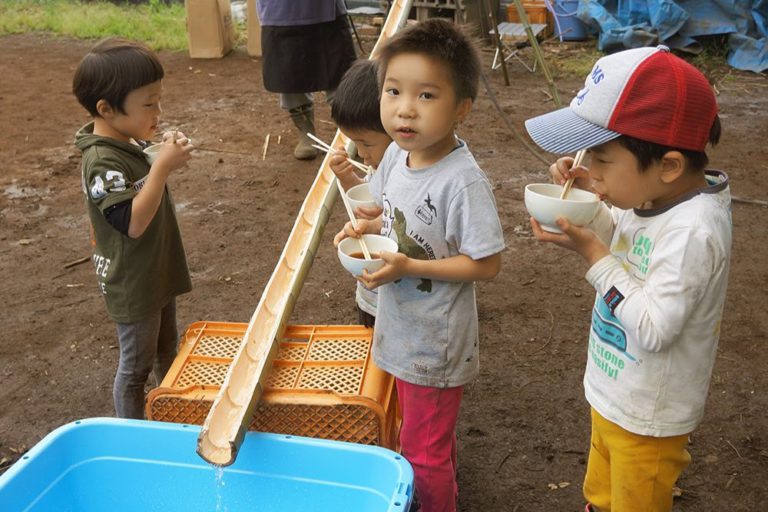
“Design and agriculture are two completely different things, but to me, they aren’t that far apart. Seeking out programs that will satisfy customers, taking pictures, and sharing on social media are all tightly connected to working as a designer. By planning events, I feel like I’m doing what I love. Above all else, being able to see the customers’ reactions makes every day rewarding.”
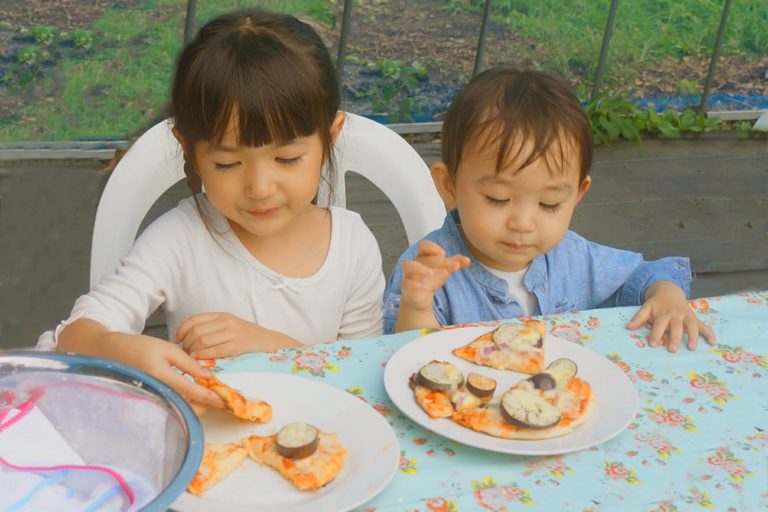
Strong-willed, Mika now wants to create a food education program for adults. During the harvesting experiences, she realized that even the parents’ generation didn’t really know how to grow fruit and vegetables. She also said that she wants to pass on the exciting things that she’s learned about food while working in agriculture.
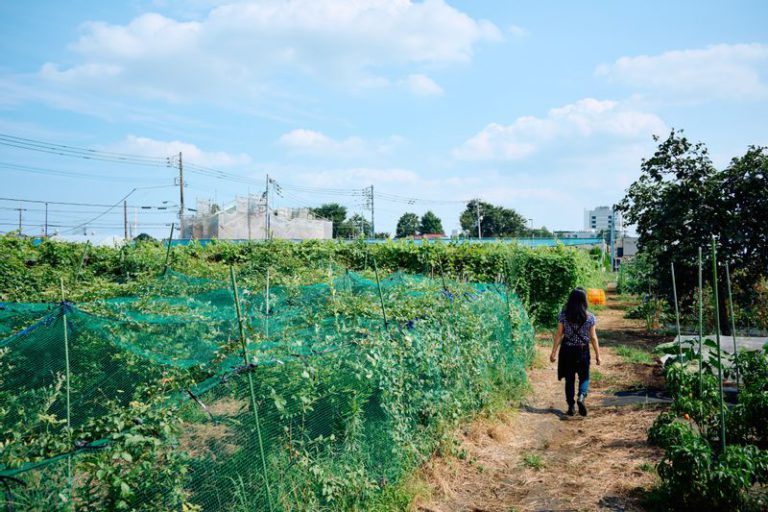
Strong-willed, Mika now wants to create a food education program for adults. During the harvesting experiences, she realized that even the parents’ generation didn’t really know how to grow fruit and vegetables. She also said that she wants to pass on the exciting things that she’s learned about food while working in agriculture.

